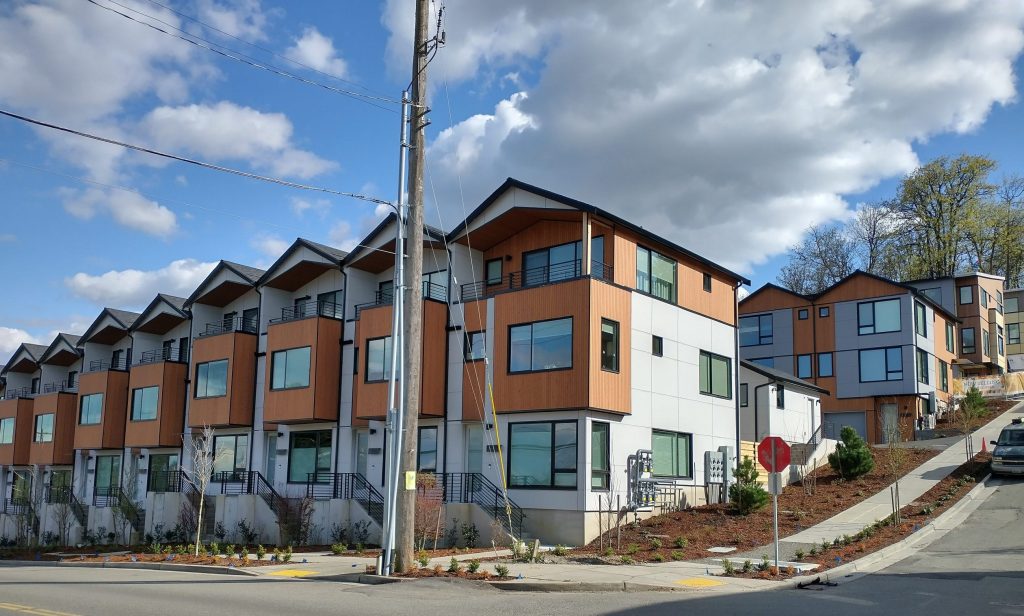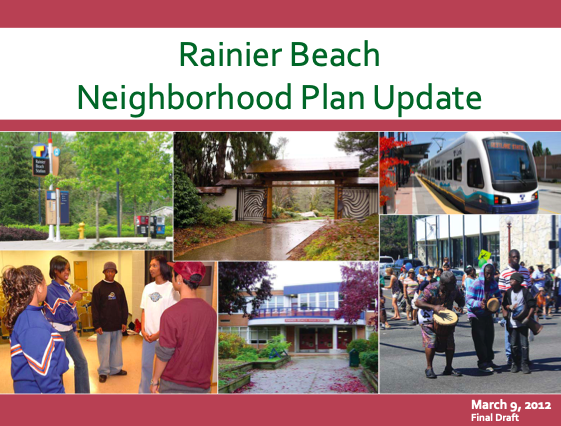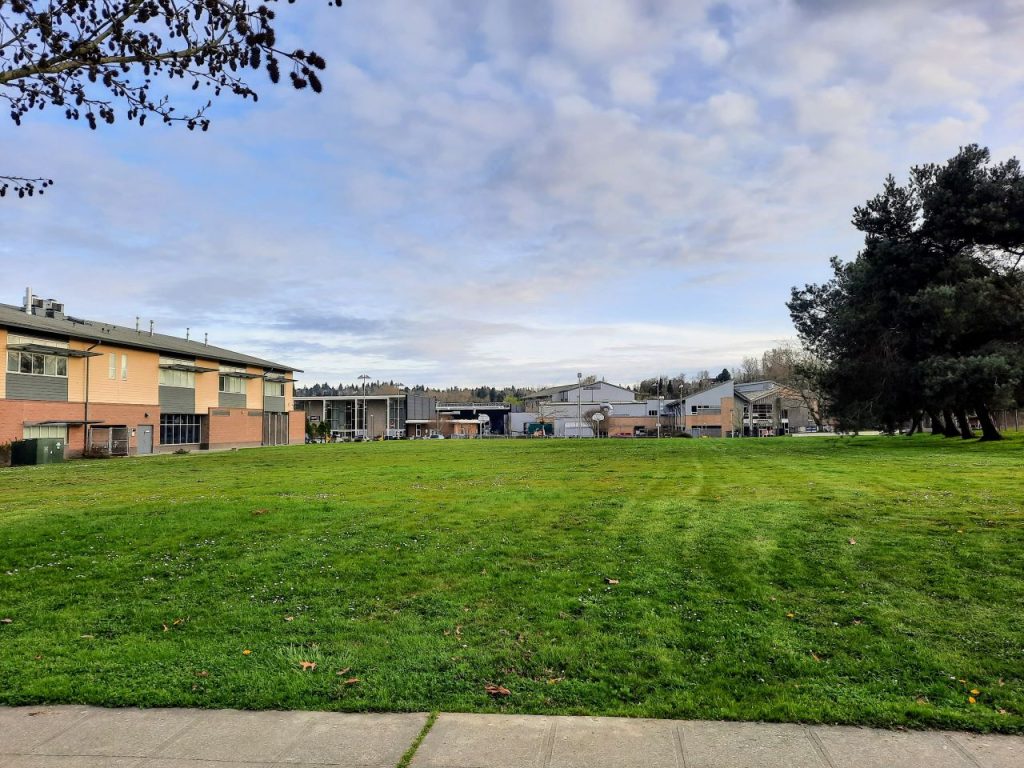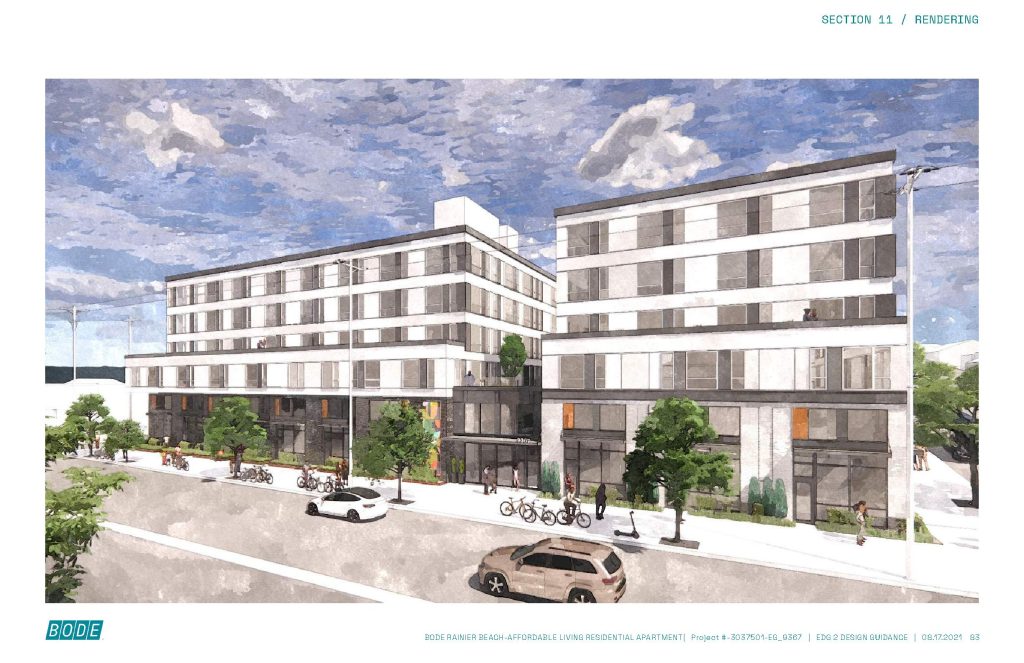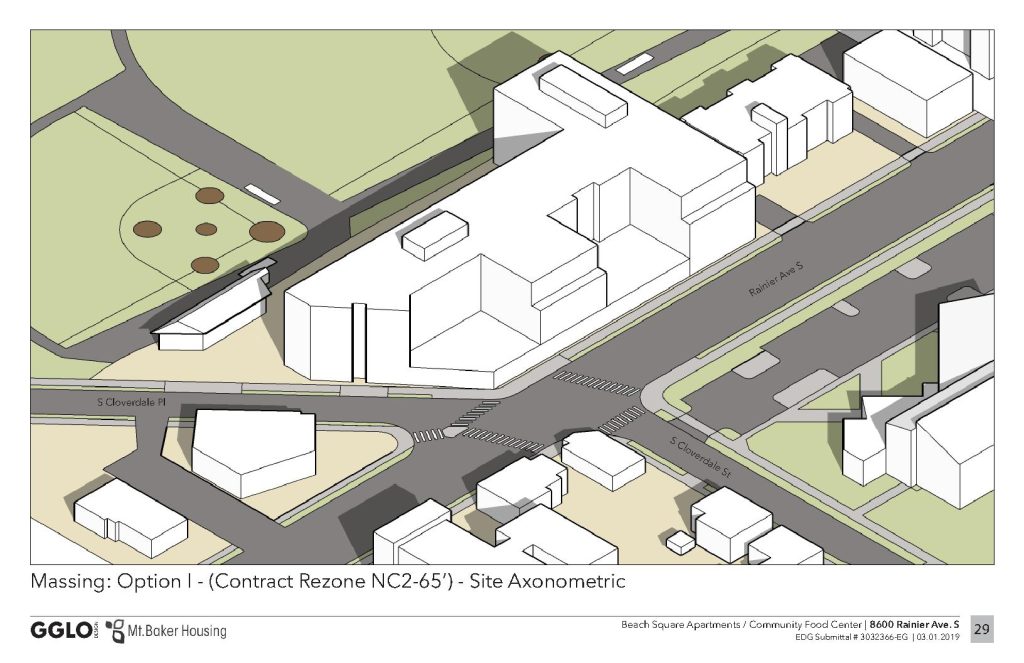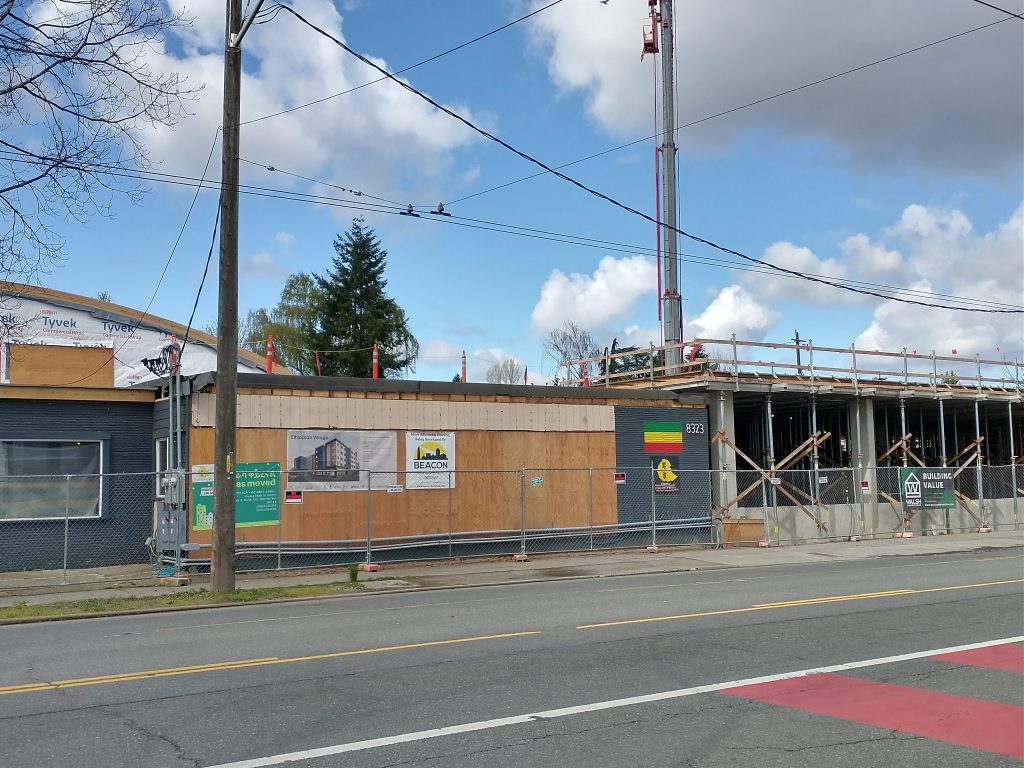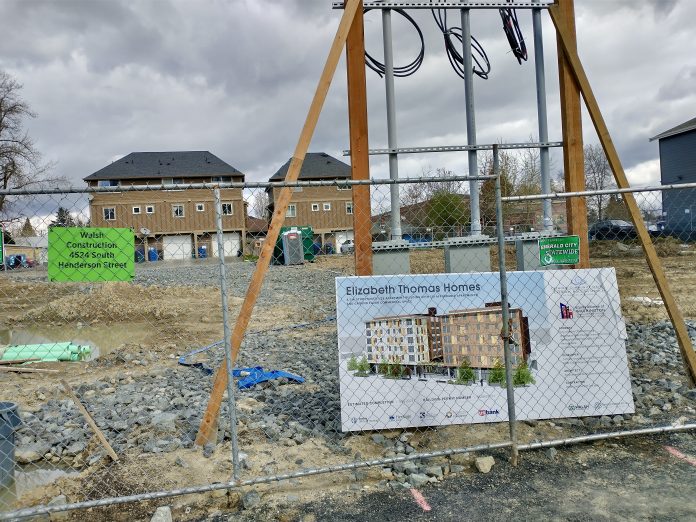
A Host of Market-Rate and Affordable Projects Are in the Works
Rainier Beach has long been one of Seattle’s most diverse and affordable neighborhoods. But as the city’s housing costs continue to climb and a large share of new developments are skewed toward higher-income renters, residents of Rainier Beach are understandably anxious about displacement. And although the neighborhood is designated as an urban village and was part of the 2019 citywide Mandatory Housing Affordability (MHA) zoning increase legislation, it hasn’t seen its housing supply increase nearly as rapidly as other South End neighborhoods with closer proximity to a light rail station — such as Columbia City or Othello to the north.
But an increasing number of new market-rate and affordable housing projects are currently in the permitting or construction phase, and as a result, Rainier Beach is on the cusp of a construction boom. The numbers are impressive: in the past year, 327 new affordable homes have opened in the neighborhood and 1,019 affordable homes are expected to come online within two years. In addition, at least 182 market rate homes are in the works.
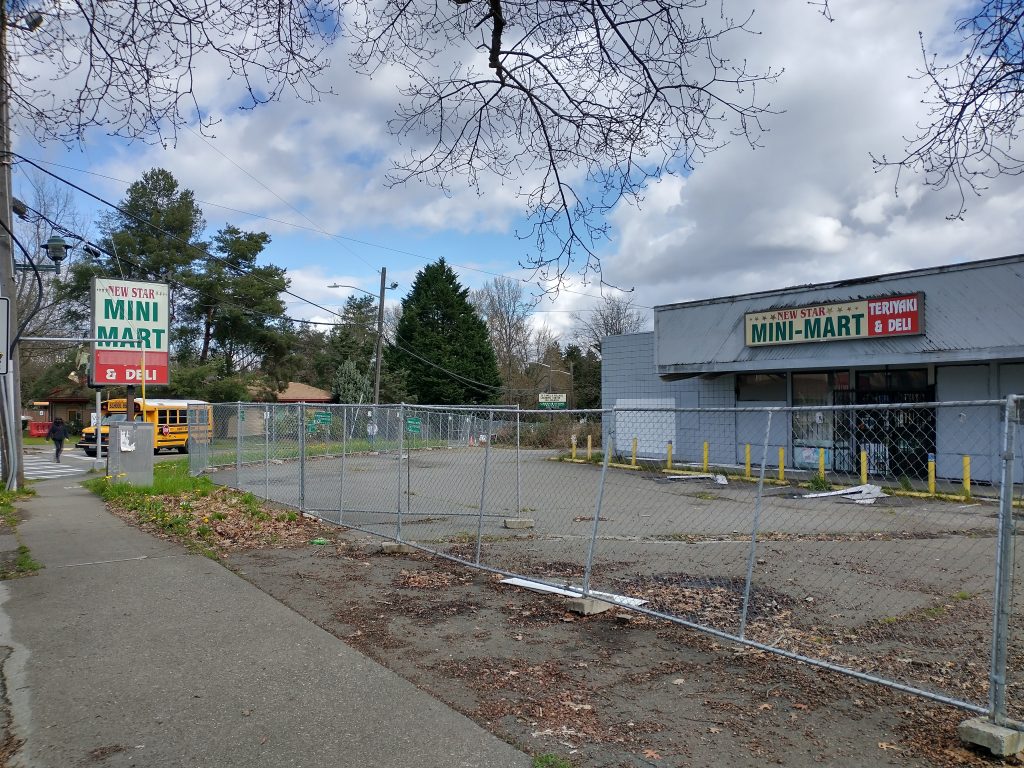
This has neighborhood activists like Gregory Davis, managing strategist at the Rainier Beach Action Coalition (RBAC), paying close attention with a mix of wariness and anticipation. “We’re going to need some market-rate [housing] near the light rail station,” Davis said, “to get some hearty development activity going. We’re not anti-development — but we want to make sure that there’s community benefit associated with it and that it’s built to support community safety.”
The displacement of the Central District’s Black community — which went from 73% of the neighborhood’s population in the 1970s to around 18% today – concerns many residents of Rainier Beach. For now, about 30% of Rainier Beach’s population is Black and 82% of residents are people of color. There’s also a robust immigrant community, with 57% of residents speaking a language other than English in the home.
Based on what happened in the Central District, Rainier Beach’s diverse communities are skeptical of new development, worrying that rising prices will send renters who can no longer afford to remain further into southern King County or suburbs far from the city center.
Davis notes that the pandemic has only increased the pressure of displacement on neighborhoods like Rainier Beach. A report issued last year by RBAC, Pacific Northwest SAGE and the Multicultural Community Center entitled Disaster Gentrification in King County noted that evictions, economic insecurity, and predatory development are real threats in this vulnerable late-pandemic time. “We do have hope and optimism,” Davis said, “but we’re also realistic about market pressures. Disaster gentrification is just folks waiting to capitalize on disadvantage.”
“How do we overcome that some people are sitting on property just waiting for something to drop?” Davis said, noting a lack of market rate development in Rainier Beach. “In the meantime nothing’s happening on some of these parcels.”
Based on what’s in the permitting process now, that may change soon. But before looking at what’s in the works in Rainier Beach, it’s worth reviewing some of the steps the city and the community have taken to help ensure development happens in an equitable way.
Neighborhood Plans and the Equitable Development Initiative
Rainier Beach’s first neighborhood plan was adopted in 1999, with goals that included street and pedestrian improvements, especially those that would connect to the proposed light rail station, which was completed in 2009. A second neighborhood plan was published in 2012 after a long process of community input, and updated again in 2016. The plan outlined strategies for protecting diversity, improving health and public safety, increasing education opportunities, promoting locally-owned businesses, and improving transit and pedestrian infrastructure. It focused on four “pearls” of the neighborhood: the area near the light rail station, “Beach Square” near Rainier Beach High School, the area near MLK Jr. Way and Rose Street, and the historic town center near the lakeshore.
In terms of housing, the plan advocated in somewhat vague terms for more affordable housing, and though projects have come online slowly, things are now starting to pick up — boosted in particular by the passage of the 2016 Housing Levy, and funds made available through the city’s MHA program.
And since its creation in 2017, the city’s Equitable Development Initiative has pumped nearly $50 million into community development initiatives focused on anti-displacement and supporting communities of color disproportionately affected by gentrification. Some of the Rainier Beach initiatives funded through EDI include the Ethiopian Village community center, RBAC’s Food Innovation District, and the Africa Women’s Business Alliance. The city’s Office of Planning and Community Development recently opened a request for proposals for this year’s cycle of EDI grants, which are due by June 5.
Davis hopes the city will think of the areas zoned for higher density near the Rainier Beach light rail station as equity development zones. “That’s kind of how we saw the Rainier Beach light rail station when we were able to change the zoning,” he said. “It’s kind of like piecemeal, but we’ve learned we’ve got to kind of catch lightning when it happens.”
The mix of market rate and affordable projects coming in the next several years has Davis somewhat optimistic that Rainier Beach can grow in a way that supports local businesses and organizations while also confronting displacement. “Can we get ahead of it in Rainier Beach? Some people say as soon as you ask the question you’re already behind,” he said. “But I think we’re seeing with these emerging developments, the emerging anchors that at least there are signs we’re moving in step with that goal.”
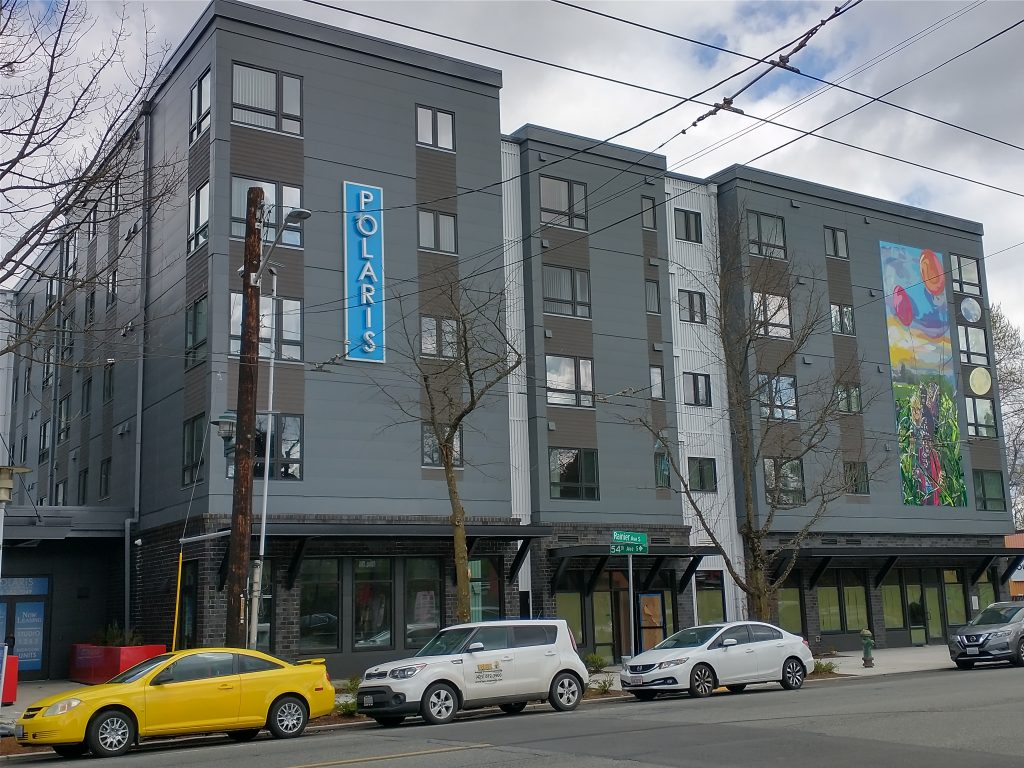
According to Stephanie Velasco, a spokesperson for Seattle’s Office of Housing (OH), since 2018 OH has invested more than $50 million in affordable housing for Rainier Beach, with funding provided by the housing levy, MHA, and state and federal sources.
“These investments support the creation of 930 new income-restricted affordable homes, plus an estimated 200 new affordable homes on the land acquisition site,” Velasco said in an email.
In addition, OH has been working with local businesses and nonprofits to ensure they can find affordable spaces in these new developments.
RBAC agrees this is another critical part of preventing displacement. Though a planned collaboration between RBAC and Mt. Baker Housing fell through on RBAC’s Food Innovation Center, other affordable housing projects in the works will likely feature space for organizations including M.A.R.S. Early Learning Academy, Northwest Tap Connection, and Empowering Youth and Families, Davis said.
A mix of market-rate and affordable housing is in the works
Here’s a rundown of what’s on the way or complete in Rainier Beach:
Near the Rainier Beach light rail station, several market-rate projects are in the works, including a four-story, 30 home building at the corner of S Henderson Street and Renton Avenue S. Permits were issued in January, 2021 but construction hasn’t yet started.
Around the corner from that development and also within a quick walk from light rail, at 9025 46th Avenue S, a five-story building featuring 42 small efficiency apartments is now in design review. Due to the proximity to light rail, the developer has proposed no on-site parking.
In 2020 the nonprofit Mt. Baker Housing Association bought a 1.25-acre site one block north of the light rail station at MLK Jr. Way S and S Trenton Street for $5.5 million in order to develop a 230 home affordable apartment building targeting families making 60% of area median income (AMI). The complex, which was formerly approved for market-rate townhouses, will eventually provide a mix of studios as well as one-, two-, and three-bedroom units, with at least 36% dedicated to family-sized units, according to a press release from Mt. Baker Housing. Permits have not been applied for yet.
Uphill from the station, several blocks west on Cloverdale Street, at 8620 39th Avenue S and 8612 39th Avenue S, developers are building a total of 22 units in a variety of three-story townhouses — part of larger group of new townhomes in the surrounding blocks. The project is nearing completion and some homes are for sale. One block away, at 8608 42nd Avenue S, another developer is constructing five new townhomes within a short walk from the station.
Near the intersection of S Henderson Street and Renton Avenue S, the Elizabeth Thomas Homes project undertaken by FAME/Equity Alliance of Washington and Catholic Housing Services will feature 119 affordable homes, with an emphasis on families earning 50-60% of AMI. Many of the units will be two- and three-bedroom, and the building will feature affordable retail space on the first floor. Permits have not been applied for yet.
Further from the station, not far from Rainier Beach High School (which will undergo a complete re-build starting this summer and reopen in 2025) there are a host of new affordable housing projects recently completed or in the works. The Polaris project at Rainier Avenue S and 54th Avenue S, a five-story apartment complex constructed by Inland Group, features 327 affordable homes with one-, two-, and three-bedroom options. The building opened for residents in early 2022.
Across the street from Polaris on the south side of Rainier Avenue S, the Edmonds-based developer BODE, which focuses on constructing privately developed affordable housing, will build a six-story, 186-home apartment building with no on-site parking. Eleven of the units will be dedicated as live-work sites.
Just east of Polaris on Rainier Avenue S, a five-story, 66-home market-rate apartment complex with first floor retail has been permitted. The building will include 23 studio apartments as well as 31 one-bedroom and 12 two-bedroom units. 27 parking stalls are proposed. According to documents filed with Seattle Department of Construction and Inspections, the developer has chosen to offer a percentage of the units as affordable housing, rather than paying into the MHA fund.
Across the street from the Rainier Beach Branch of the Seattle Public Library, on 50th Street S, three townhouses that are three stories tall will feature a total of 12 market-rate homes along with on-site parking for three vehicles.
At the intersection of Rainier Avenue S and S Cloverdale Street, the six-story Via 7 affordable housing complex being built by Mt. Baker Housing Association will offer 220 affordable homes, and is currently in the permitting process. The building will focus on providing homes to families making less than 60% of AMI or less, and at least a third of the units will be two- and three-bedroom units. Forty parking stalls are proposed.
Continuing north on Rainier Avenue to the intersection with S Rose Street, is a hub of activity for Rainier Beach’s Ethiopian and East African community. At 8323 Rainier Avenue S, The Ethiopian Village housing and community project is in the works thanks to a partnership between Ethiopian Community in Seattle and HumanGood. The five-story building will provide 90 affordable units of studio and one-bedroom apartment geared toward seniors. Construction started in August 2021 and is expected to be complete in December 2022. The Ethiopian Community Center in the complex will include afterschool and summer children’s programs, a senior meal program, and a range of culturally appropriate social services.
A market-rate development nearby at 5002 S Rose Street will contain 27 small efficiency units in a four-story building with no on-site parking. Permits were issued in 2020.
Further to the north, not far from the intersection of Rainier Avenue S and Kenyon Street, Bellwether Housing’s Flourish on Rainier project will include two buildings (a four-story and a five-story apartment complex) featuring 174 affordable homes as well as on on-site affordable childcare center and the new offices of Muslim Housing Services. The complex will offer a range of apartments, including studios, one-, two-, three-, and even some four-bedroom units. Flourish is currently under construction and aims to begin leasing in 2023.
4354 S HENDERSON ST, four-story, 30-unit apartment building with office
9025 46th AVE S, a five-story building featuring 42 small efficiency apartments
4215 S TRENTON ST, 230-unit affordable apartment building targeting families making 60% of AMI
8608 42nd AVE S, five new townhouses
9025 46TH AVE S, five-story apartment building with 42 small efficiency dwelling units
8620 39TH AVE S, seven three-story townhouse buildings with a total of 16 units
8612 39TH AVE S, three three-story townhouse buildings with six units total
4525 S. HENDERSON ST, mixed use building with one level of retail/commercial spaces and five stories containing 119 affordable apartment homes (Elizabeth Thomas Homes)
9400 RAINIER AVE S, a five-story apartment complex featuring 327 affordable homes (Polaris)
9367 RAINIER AVE S, six-story, 186-unit apartment building with no on-site parking
9420 RAINIER AVE S, five-story, 65-unit apartment building with retail
9127 50TH AVE S, three three-story townhouses with a total of 12 market-rate units
8600 RAINIER AVE S, six-story complex with 220 affordable homes (Via 7)
8323 RAINIER AVE S, five-story building with 90 affordable units geared toward seniors (Ethiopian Village)
5002 S ROSE ST, four-story apartment building with 27 small efficiency dwelling units
7930 RAINIER AVE S, four-story and a five-story apartment complex featuring 174 affordable units (Flourish on Rainier)

Andrew Engelson
Andrew Engelson is an award-winning freelance journalist and editor with over 20 years of experience. Most recently serving as News Director/Deputy Assistant at the South Seattle Emerald, Andrew was also the founder and editor of Cascadia Magazine. His journalism, essays, and writing have appeared in the South Seattle Emerald, The Stranger, Crosscut, Real Change, Seattle Weekly, the Seattle Post-Intelligencer, the Seattle Times, Washington Trails, and many other publications. He’s passionate about narrative journalism on a range of topics, including the environment, climate change, social justice, arts, culture, and science. He’s the winner of several first place awards from the Western Washington Chapter of the Society of Professional Journalists.

